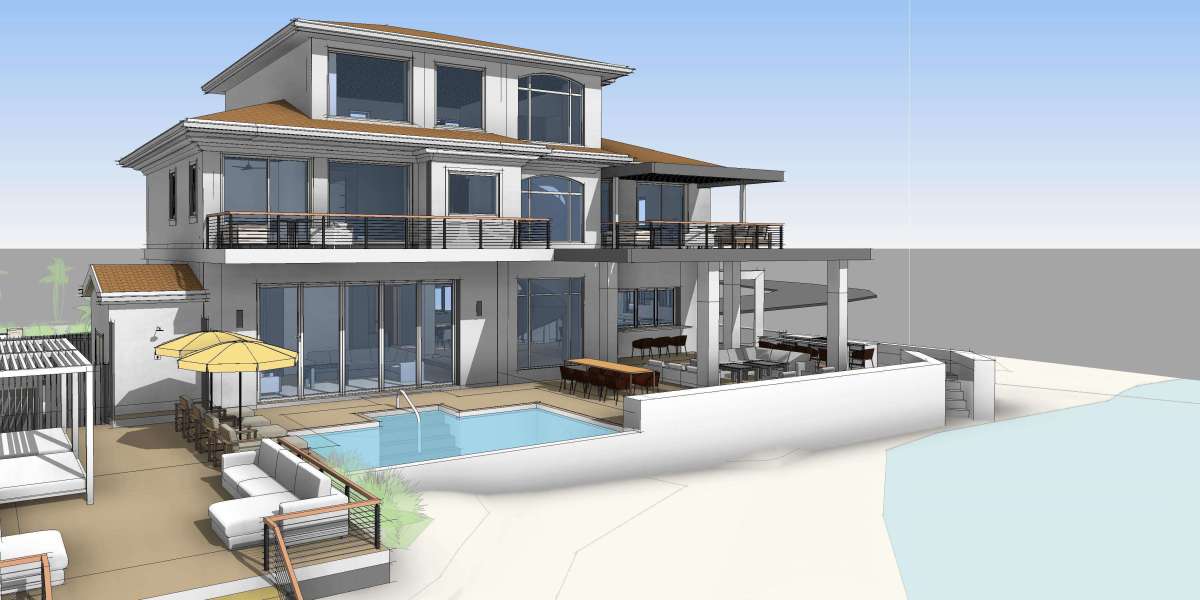Architectural 3D modeling services are revolutionizing the construction industry, shifting the way projects are planned, visualized, and executed. Gone are the days of relying solely on flat, 2D blueprints and sketches that leave room for misunderstanding and error. Instead, advanced 3D modeling technology empowers architects, engineers, contractors, and clients to engage with projects in dynamic and meaningful ways.
What can 3D modeling do for you or your business? This blog will explore the top 10 benefits of architectural 3D modeling services and why they have become a crucial part of modern construction processes.
Enhanced Visualization and Design Clarity
One of the most significant advantages of architectural 3D modeling services is the ability to bring designs to life. Unlike 2D drawings, 3D models allow stakeholders to better visualize a project in detail before any construction begins.
Realistic representations: From textures to lighting, 3D models deliver life-like visualizations that mirror finished structures.
Clear understanding of spatial relationships: See how spaces will actually look and interact with each other, providing clarity to clients and design teams alike.
This enhanced visualization aligns expectations and ensures that everyone involved, from investors to builders, has a clear picture of the end goal.
Improved Communication and Collaboration
Architectural 3D modeling enhances teamwork by providing a central point of reference.
Cross-team collaboration: Engineers, architects, and contractors can view and edit the same model, ensuring all stakeholders are on the same page.
Easier client communication: 3D models simplify explanations of complex designs, allowing clients to better understand project specifics.
With everyone using the same visual language, misunderstandings are reduced, making for smoother, more efficient projects.
Early Detection of Design Flaws
Spotting issues early is critical in avoiding costly mistakes later. Architectural 3D modeling services make it possible to detect design flaws while they’re still on the drawing board.
Identify structural inconsistencies before they turn into construction problems.
Simulate behaviors and outcomes for elements such as airflow, light, or load-bearing capacity.
This capability minimizes risks and ensures that potential challenges are addressed proactively.
Accurate Cost Estimation and Budgeting
Architectural 3D modeling supports precise cost estimations by detailing every aspect of a project.
Quantitative takeoffs can be generated directly from the model, providing a comprehensive view of materials needed.
Visual insights allow planners to identify cost-saving alternatives without compromising quality.
This accurate budgeting fosters financial confidence and reduces unexpected expenses down the line.
Streamlined Project Management
Managing an entire construction project is no small feat. Architectural 3D modeling tools simplify this process.
Centralized data ensures updates and modifications flow seamlessly across teams.
Improved project timelines arise from better coordination among professionals and vendors.
By keeping everyone aligned, 3D modeling shortens project durations and achieves better overall efficiency.
Effective Marketing and Sales Tools
3D models function as powerful marketing and sales assets, helping professionals showcase their projects effectively.
Impress prospective buyers or investors with interactive walkthroughs of homes or buildings.
Use compelling renderings to demonstrate the benefits of upcoming developments or renovations.
When clients can see exactly what they’re getting, it becomes much easier to secure approvals and funding.
Reduced Construction Errors and Rework
Construction errors and rework are among the most expensive issues in construction. Architectural 3D modeling dramatically reduces these inefficiencies.
Create precise construction plans that leave little room for misinterpretation.
Test virtual iterations of the project, ensuring all specifications meet exacting standards before breaking ground.
Fewer errors translate to significant savings in both time and resources.
Increased Client Satisfaction
Happy clients lead to repeat business and positive referrals. Architectural 3D modeling helps deliver that satisfaction by ensuring clients are included throughout the design process.
Allow clients to explore designs interactively, giving them a sense of ownership and confidence in the project.
Incorporate client feedback seamlessly into the model, ensuring their vision shines through.
This high level of engagement strengthens trust and builds lasting professional relationships.
Support for Sustainable Design
Green building is no longer optional. With 3D modeling, sustainable design principles become easier to integrate.
Analyze how a building will interact with natural light, energy, and resources before construction begins.
Optimize layouts to reduce waste, prioritize energy-efficient materials, and ensure environmental compliance.
This commitment to sustainability benefits not only the planet but also your reputation as an environmentally conscious business.
Competitive Advantage
Finally, adopting architectural 3D modeling services gives you a critical edge over competitors who have yet to adopt modern practices.
Stand out in the marketplace with superior presentations and faster turnaround times.
Appeal to tech-savvy clients who expect cutting-edge solutions for their projects.
By leveraging the power of 3D modeling, you position yourself as an industry leader prepared for the future of construction.
Why Now Is the Time to Adopt 3D Modeling
The construction industry is transforming, and 3D Revit modeling services are at the heart of that transformation. By enhancing visualization, improving communication, and streamlining project workflows, these tools make projects more efficient, sustainable, and client-friendly.
Looking to integrate 3D modeling into your next project? It’s easier than you think. Explore groundbreaking solutions and find out how these services can elevate your construction projects to the next level.







